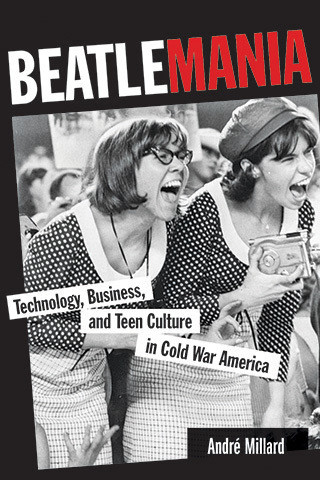
Reviews
[Chasing Sound] does more than traverse the technology of sound recordings: it provides a history on the evolution of sound recording, quality, and even popular music movements, and is a 'must' for any music history or music technology library.
Chasing Sound is a welcome addition to a growing literature illuminating the history of sound recording.... What makes the book unique are the author's interviews with dozens of engineers and producers. The voices of those who worked in the studios day in and day out enliven the rest of the book's narrative with a perspective born of practical experience.
This 292-page hardbound book goes back to Edison’s invention, moves through the electrical recording era and brings us to the end of the analog recording studio.
Schmidt Horning's excellent dissertation... provides us with valuable and well-founded information of the recording music business from its early beginnings until the rock music era. This book can be recommended to all not only interested in the technological development of sound recording, but also in the sociological change of the recording profession from the 1890s to the late 1960s.
Chasing Sound represents an indispensable and critical approach for historians of sound, one that is unafraid of reconfiguring the central players in a narrative as big as the history of recorded music.
Schmidt Horning provides an insightful look into the conception and maturation of the recording industry and ways the continuing quest for improved sonic fidelity impacts popular music and Western culture.
Susan Schmidt Horning's recent book, however, is a compelling exploration of a world largely hidden from view that has been shaped by scientists and recording engineers whom she calls tinkerers. More importantly, Chasing Sound is a vital contribution to sound studies that traces the shift from the aesthetic of live performance to the recorded object that has dominated the popular imagination for nearly a century... Moreover, Schmidt Horning attends to intricate detail but includes so much archival research that recordists, scientists, musicians, and others are humanized players in an important tale of American culture. Schmidt Horning cleverly unfolds this unique history while underscoring the significant accomplishments that they wrought.
An engaging and colorful narrative about the evolution of a profession.
This book is rich in detail and analysis, resulting from years devoted to researching into archives and collecting interviews (as well as Schmidt Horning's knowledge of the trade as a musician herself).
Meticulously researched...
Chasing Sound is a masterful accomplishment. It offers a crucial addition to the burgeoning scholarship on sound and recording and holds significant value for students and scholars of labor, technology, and popular culture in the twentieth-century United States. With a sharp eye and keen ear, Susan Schmidt Horning gives us that rarest of treasures: a book that succeeds equally well as sophisticated analysis and engrossing narrative. It is highly recommended.
Schmidt Horning provides a diligent and thoughtful contribution to the history of the recording industry... A valuable addition to the body of scholarship on the recording industry... Marvel at the intricacy of the art, the miracle that we can preserve and retrieve sounds from decades ago, and appreciate the individuals who worked so thanklessly for the love of the music.
A well-written, fascinating account of the multiple shifts and changes in studio recording—from the art of capturing a live performance to the art of engineering an illusion and the concomitant reversal of the historical relationship between live and recorded music.
Recording technology is at the heart of Chasing Sound, Horning has made it user-friendly for those without extensive technical backgrounds, and she draws attention to matters easily overlooked by specialists... A welcoming introduction to the history of musical recording.
Schmidt has gone above and beyond the call of duty. By letting more than 80 deffent types of stinging incets jab him, he has developed a "pain index" for each sting... His descriptions of the pain are wry and eloquent.
Chasing Sound is a rich account of the development of recording studio technology and musical culture. It offers captivating new material and is a valuable contribution to scholarship in sound studies.
Book Details
Acknowledgments
Introduction
1. Capturing Sound in the Acoustic Era
2. The Studio Electrifies
3. A Passion for Sound
4. When High Fidelity Was New
5. Control Men in Technological Transition
6. The Search for
Acknowledgments
Introduction
1. Capturing Sound in the Acoustic Era
2. The Studio Electrifies
3. A Passion for Sound
4. When High Fidelity Was New
5. Control Men in Technological Transition
6. The Search for the Sound
7. Channeling Sound
Conclusion
Notes
Essay on Sources
Index






